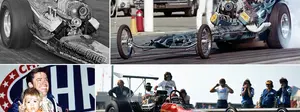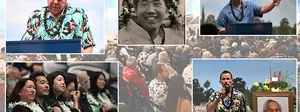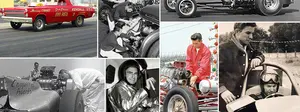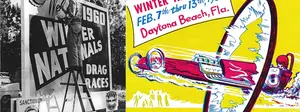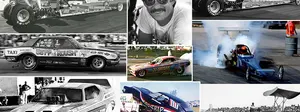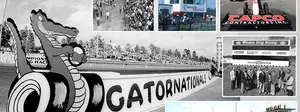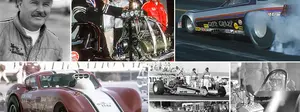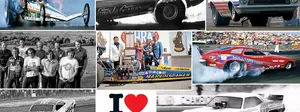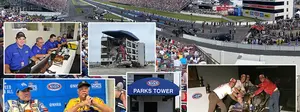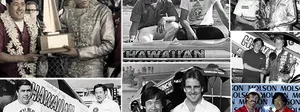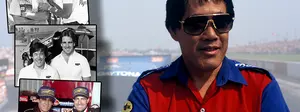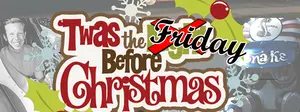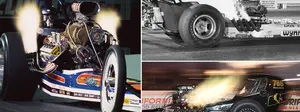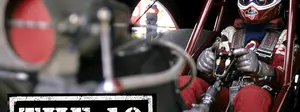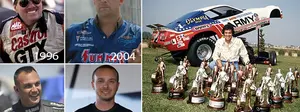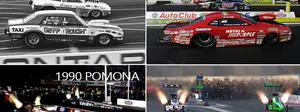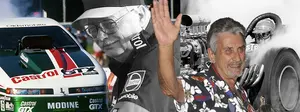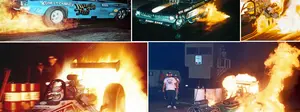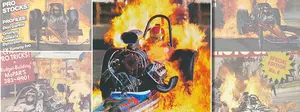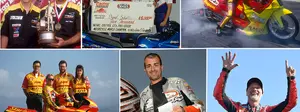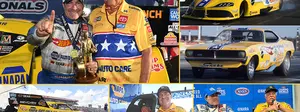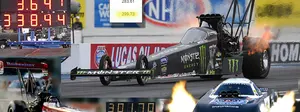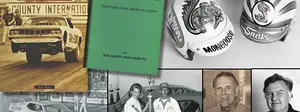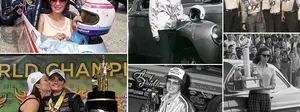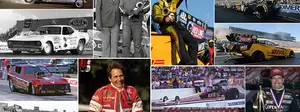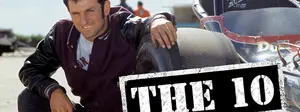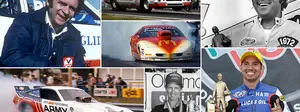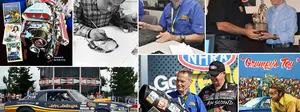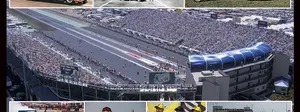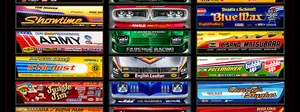More early-1970s Funny Cars
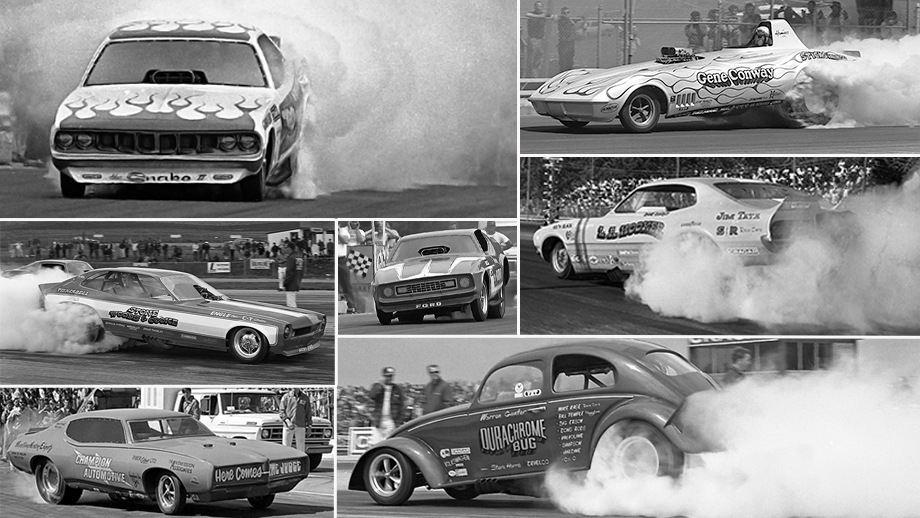
Last week’s roundup of East Coast Funny Car heroes of the early 1970s stampeding across their home turf included a promise to showcase the out-of-town competition, too, the Midwest, Down South, and West Coast racers who were always eager — and, often, well incentivized — to roll on down the highway to play The Bad Guy against the home troops.
For a lot of these teams, when they left home — whether that be Illinois, Texas, or California — they were like a pack of wandering gypsies, traipsing around the country with their ramp trucks heading for the next paycheck, whether that be two hours or two days down the road. For a fond look back at that not-always-glamorous lifestyle, check out this column I did several years ago that captured the scene from the eyes of its heroes, including our dearly departed friend Tom “the Mongoose” McEwen, who painted this picture for me: “You’re up all night heading 18 hours to the next race, and it’s 3:30 in the morning, and you’re tired and greasy and hungry, and you’d see the glow over the next hill, and you’re just praying it’s a Waffle House open 24 hours.”
Throughout this column, you'll find a ton of hyperlinks back to more full columns on some of the racers mentioned here for your further reading enjoyment. So, without further ado, and as captured through the lens of former Division 1 Photographer Fred von Sholly, here we go …

If you’re gonna invite one driver from the West Coast, you’re gonna want Don "the Snake” Prudhomme, right? Here’s “the Vipe” in his Snake II Hot Wheels Cuda laying down a rolling fogbank at Aquasco.

And if you’re gonna have “the Snake,” you gotta have “the Mongoose," too, right? I mean, it’s like Abbott without Costello, Ben without Jerry, Fred without Barney.
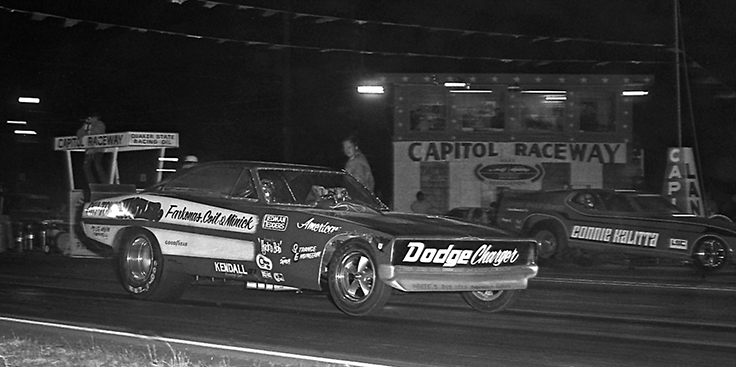
The famed Chi-Town Hustler of John Farkonas, Austin Coil, and driver Pat Minick also was on every track owner’s wish list thanks to their huge smoky burnouts. Here they’re tangling with another quarter-mile legend, Connie Kalitta, at Capitol Raceway.

The fabled Texas-based “Blue Max” was also a popular draw throughout its lifetime, with Lone Star State heroes like Richard Tharp and, of course, Raymond Beadle at the wheel. I believe though this is Jake Johnston at the wheel of the famous Ford in 1970. The Don Hardy-chassised Blue Max debuted at the Winternationals, where it set top speed at 203.61 mph, then was destroyed in a towing accident. Hardy built them a new car with a narrowed roll cage, and the performance binge continued, highlighted by a year-end win at the famed Manufacturers Meet at Orange County Int’l Raceway, where Johnston ran the lowest elapsed time in class history, 6.72, and, in the final, beat Rich Siroonian in “Big John” Mazmanian’s Barracuda on a holeshot, 6.89 to 6.88.

Texan Gene Snow was a Funny Car terror in the early 1970s. In 1970, he won NHRA national events in York, Pa. (the pre-Englishtown Summernationals), Dallas (World Finals), and the inaugural Supernationals in Ontario, Calif., as well as three AHRA events and the AHRA championship in his Dodge Challenger. In 1971, he formed a two-car team with the aforementioned Johnston in some bad-ass Dodge Chargers. Snow won the 1971 Super Stock Magazine Championships in York, Pa., was runner-up behind Leonard Hughes at the NHRA Summernationals, won the OCIR All-Pro Series race, and was named Drag News Driver of the Year.
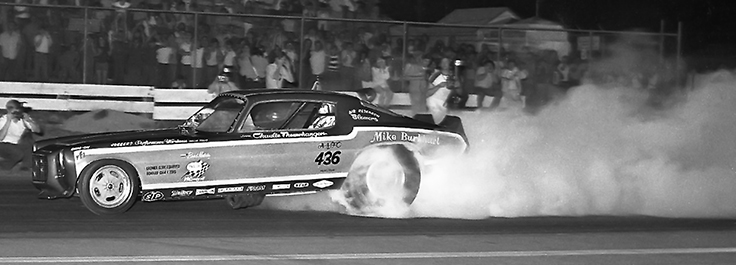
Want more Texans? Here’s a couple with Charlie Therwhanger at the wheel of “Big Mike” Burkhart’s Camaro in 1971. This car was one of the strongest Chevy-powered cars of the early 1970s. Therwhanger, out of Amarillo, had joined Mart Higginbotham as part of a three-car Burkhart team after returning from service in the military. Burkhart, who had been partners with a pre-Blue Max Schmidt, must have liked drivers with long surnames.

And speaking of Higginbotham, here he is in his next ride, the Don Long-built Drag-on Vega in York, replete with side canard wings. Higginbotham and Burkart raced together through the end of 1972 before parting company, and another grizzled Texan, Frank Cook, carried the Drag-on name into the future with Chuck Landers. We lost Mart in a highway accident in June 2014.
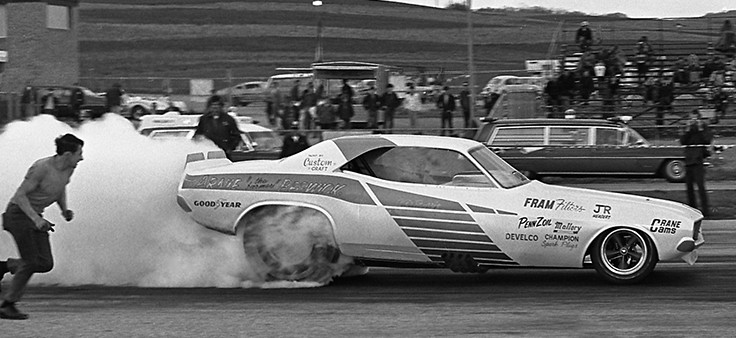
Arnie “the Farmer” Beswick was in early on the Funny Car craze, first with his altered wheelbase Tameless Tiger Tempest then his Judge GTOs and Boss Bird Firebird floppers, but what’s the perennial Pontiac purist doing in this Dodge Challenger? Turns out that this ex-Ramchargers machine was purchased by Charles Revson, of Revson Cosmetics fame, who had no idea what to do with it or how to run it. Beswick agreed to help him, which turned into his ability to tour the car (he had “Would You Believe?” lettered on the front spoiler to those surprised that he was in a Dodge), which also allowed him the chance to run a Hemi instead of his traditional Poncho power. Don Schumacher was especially helpful in getting Beswick dialed in, and the car set numerous track records before Beswick crashed it at Great Lakes Dragaway when he went off course thanks to a foggy windshield and rolled it several times.

And speaking of Schumacher, here he is drilling Warren Gunter and his popular Durachrome Bug off the starting line. I believe this is 1971 when Schumacher was fresh off his huge win at the ’70 Nationals and either heading to or still reveling in his win at the 1971 Springnationals in Dallas. You can’t underestimate Schumacher’s import in the early 1970s Funny Car scene as he also provided first-class rides to the likes of a pre-Blue Max Raymond Beadle, Bobby Rowe, Arnie Behling, Clare Sanders, and Cliff Zink. Gunter’s Bug was certainly a rarity and so cool that I wrote a whole column about it a few years ago. The first version was built on an altered chassis and seldom went straight and finally had an encounter with Mr. Guardrail at Orange County. The second version — pictured here and identifiable by the five-spoke wheels rather than the 12-spoke wheels that were on the first car — had an actual Mike Kase-built Funny Car chassis underneath the shell.

Ed “the Ace” McCulloch squares off with Gene Conway’s wild topless Corvette in this match. This was McCulloch’s third Funny Car with Art Whipple, following a Camaro and a Duster, the latter of which was lost in a trailer fire on the way to Indy in 1970. Whipple and McCulloch rebuilt with this Barracuda, which carried “the Ace” to a runner-up at the World Finals, where a victory would have given him the world championship that eluded him his entire career. His solace came the next year with his first of five Indy Funny Car wins in 1971. Conway's Corvette was the follow-up to his popular Destroyer Jeep Funny Cars.

Before his cars were called Showtime starting in 1973, the flanks of Tom Hoover’s Funny Cars carried the sponsorship of White Bear Dodge in White Bear Lake, Minn. Hoover began his career in Top Fuel before switching to Funny Car in 1970 and a career in the class that lasted more than 25 years.

Roger Lindamood and his Michigan-based Color Me Gone floppers traveled all across the country and were another highly sought entry. Lindamood, who came to drag racing late after being one of Michigan’s top 10 oval-track drivers, worked at Chrysler’s “transmission lab” and was instrumental in helping the famed Ramchargers team transition from manual to automatic transmissions, which brought him into contact with Rich Branster. They put together the first Color Me Gone, a Stocker, in 1963 (the name was taken from one of the final lines of the “My Coloring Book” tearjerker hit song in 1963), and Lindamood moved into Funny Cars a few years later and ran under glass through 1979.
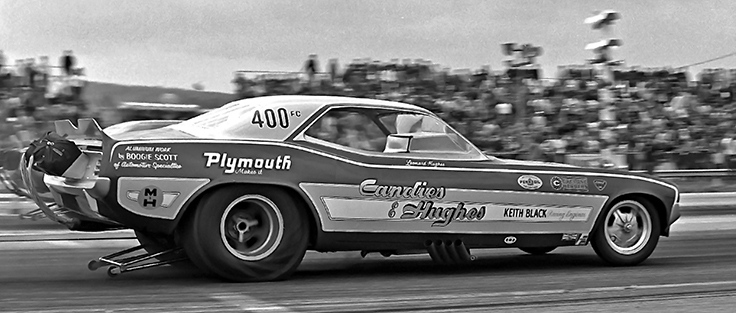
The Candies & Hughes team had already experienced a lot of success with Leonard Hughes driving their Funny Car, but in 1972, Hughes stepped back solely to tune the car and the deep-pocketed Paul Candies hired one of the era’s best shoes, Leroy Goldstein, to drive their car in 1972 and ’73.
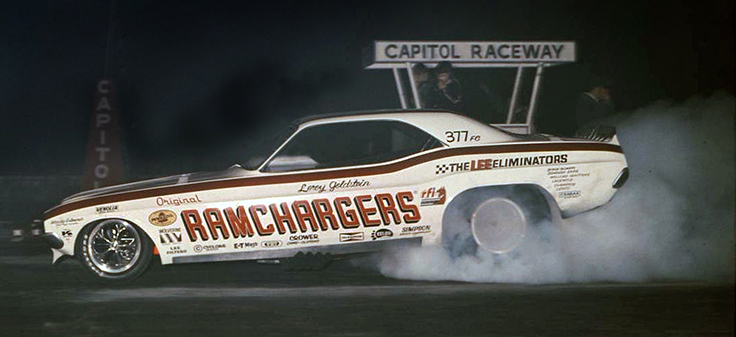
And here’s Goldstein the previous year driving the famed candy-striped Ramchargers entry, laying down the smoke at Capitol Raceway. Goldstein is generally credited with making the first six-second Funny Car run in this car in June 1970 at New York National Speedway, although I’ve also heard people claim that Danny Ongais or Dave Beebe beat him to it.
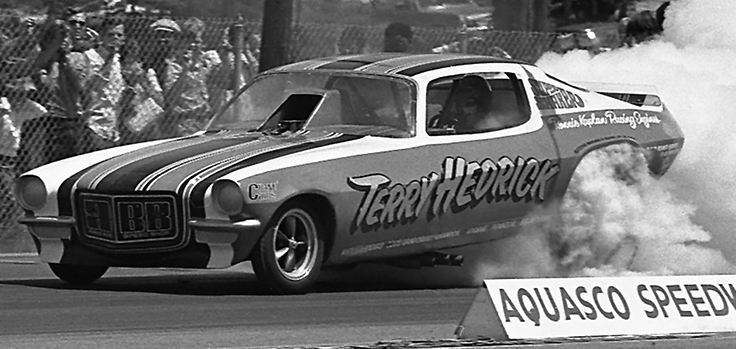
Michigander Terry Hedrick first came to fame at the wheel of Pete Seaton’s eponymous Seaton's Super Shaker Corvair Funny Car in 1967 and ’68. They transitioned into a Chevy II and, famously, were in the other lane in the final when Goldstein ran that first six. Hedrick and Seaton went their separate ways late in 1970, and Hedrick got this Camaro, that was branded simply as the Super Shaker.
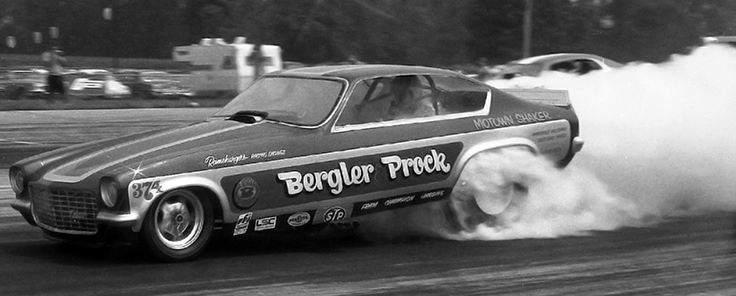
Seaton was also an early partner with Al “the Tinman” Bergler and driver Tom Prock before Bergler and Prock went out on their own with this Vega, dubbed the Motown Shaker. Bergler later went on to drive his own car of the same name and Prock — father of John Force Racing tuning wunderkind Jimmy Prock and grandpa to talented young Top Fuel shoe Austin Prock — had his own great career in the Castronovo family’s Custom Body Enterprises cars and his and Poncho Rendon’s Detroit Tiger. This Vega was heavily damaged later in 1971 in Indy when it went into a giant wheelstand and collapsed the front end upon return to terra firma and sent Prock careening into the side of Goldstein and the Ramchargers.

Similar to the Lew Arrington photo last week, here’s a prototypical “nasty” shot of those early 1970s Funny Cars in the form of Tommy Grove’s Boss 429-powered Mach I leaving the line hard at Aquasco. Grove was a diehard Ford man and one of the early success stories with the 427 SOHC engine before switching over to experiment with the newer 429.
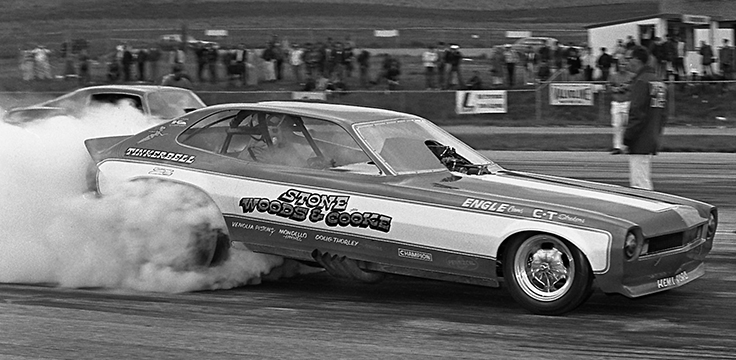
Although the famed Stone, Woods & Cook team was known for its supercharged gassers, it also ran Funny Cars in the 1970s, including this Exhibition Engineering-built Pinto that they dubbed Tinkerbell. Note also that the Cook in this case is Cooke — with an 'e' at the end — after original driver Doug Cook left the team and they brought on another “partner” with the Cooke surname (Tim Woods’ secretary, Abie Cooke, whose first name is lettered in very tiny script above the name) to keep the famed name intact. It's certainly an odd-looking piece, especially the very short rear deck, and I can’t imagine it handled really well. David Ray and "Mighty Mike" Van Sant both drove this car.
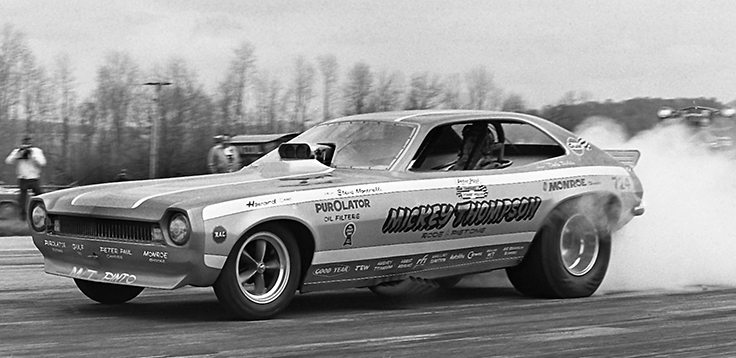
Dale Pulde wheeled a similar Pinto for Mickey Thompson and a emphasize similar as the M/T Pinto was a super-lightweight (just under 1,700 pounds, according to Pulde) machine with a titanium chassis fashioned by Woody Gilmore and direct drive. This car, like Henry Harrison’s Mach I team car, started the year with Boss 429 power but switched to a Hemi later in the year, and the move was significant as Pulde qualified No. 1 in Indy and reached the final where, unfortunately, he lost the race (and the body) in a fiery runner-up behind Ed McCulloch.

Cliff "The Chicago Kid" Brown (actually from Lockport, Ill.) came from Top Fuel to Funny Car in 1970 behind the wheel of the Stone, Woods & Cooke Dark Horse Mustang, then went out on his own with this Romeo Palamides-built Mach I.
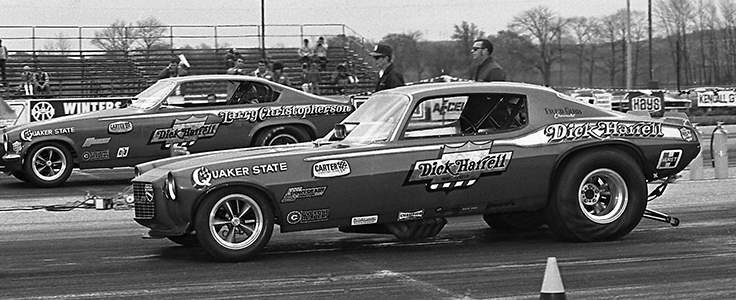
Dickie Harrell was “Mr. Chevrolet” to legions of Bowtie faithful, and they couldn’t get enough of him, so he had a two-car team based out of Missouri with Arizonan Larry Christopherson in the second car, a Vega, alongside Harrell’s Camaro. This is 1971, after Harrell, like many Chevy diehards, including Bruce Larson, had finally and reluctantly given up on the Chevy powerplant and switched to a Hemi. Harrell was killed in a racing accident in Toronto later this year.

Larry Fullerton and partner Kevin Doheny made the long tow from Van Nuys, Calif., to race across the country with their popular Trojan Horse Mustang. Fullerton had been in the flopper game since 1967 with partner Jean Soularie on a 427 SOHC-powered Mustang before switching to the early-model 392 Hemi with this car in 1971.

The brazenly named L.A. Hooker of the Condit brothers — driver Dave and brothers Billy and Steve — was also a popular draw from the West Coast. With Gene Beaver (John Force’s notorious “Uncle Beavs”) tuning, the Steve Plueger-built Maverick was a solid performer with a runner-up at the 1971 March Meet. This is also the car that famously was beside Don Prudhomme’s Hot Wheels 'Cuda when it took fiery flight in the traps in Seattle that year.

Finally, if you come from Pontiac, Mich., surely you have to drive a Pontiac, right? Here's Bob Ehgotz's '69 GTO, complete with Pontiac's trademark "Here Comes the Judge" slogan painted onto the grille. Duane Muelling, who later gained a lot of fame with Bob Gottschalk and the late Al DaPozzo, was the crew chief on this car, which had fully enclosed side windows, a rarity back then.
That’s it for another trip back in the Insider Time Machine to an era where Funny Cars were funnier than they are today and maybe even more fun. Thanks for stopping by. We now return you to the year 2023.
Phil Burgess can be reached at pburgess@nhra.com
Hundreds of more articles like this can be found in the DRAGSTER INSIDER COLUMN ARCHIVE
Or try the Random Dragster Insider story generator


